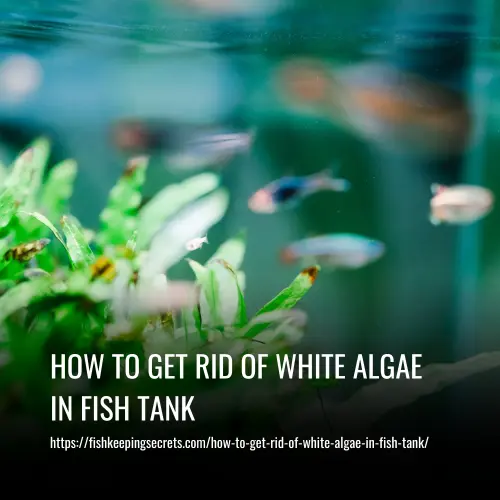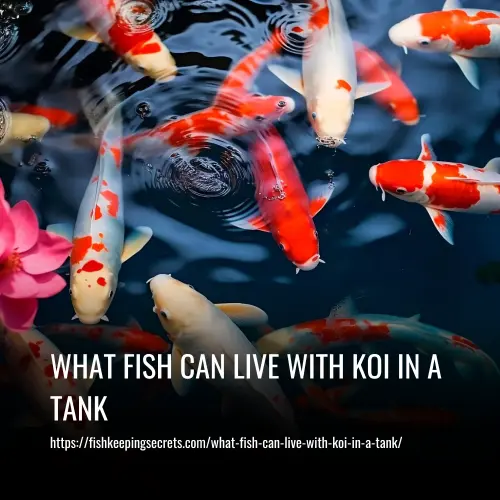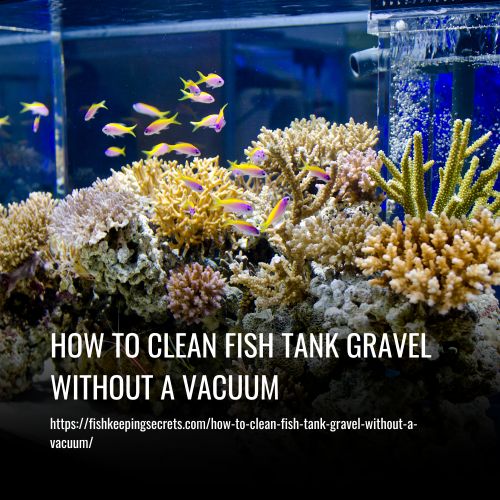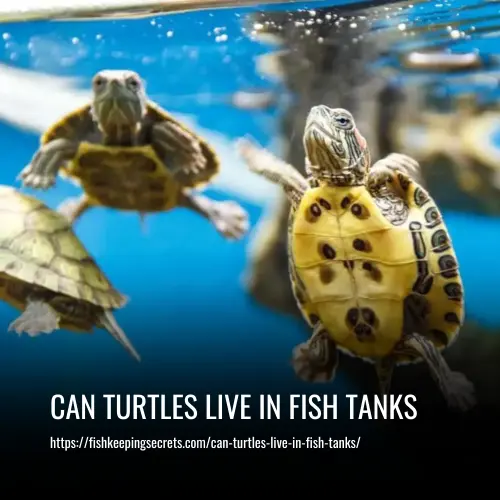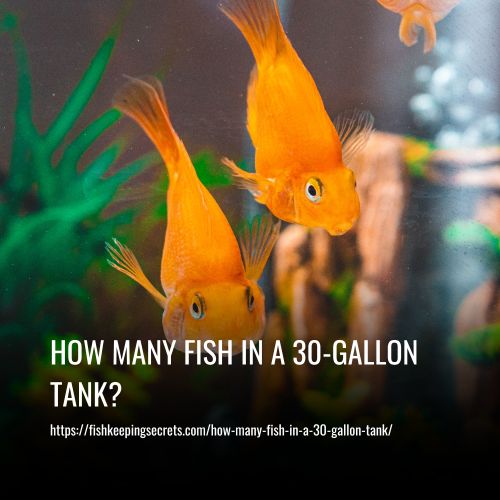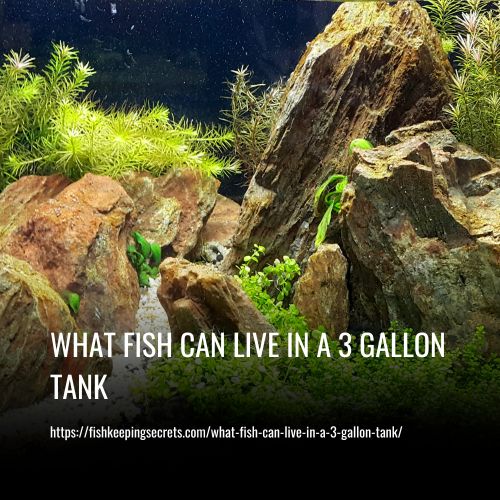How To Quarantine Fish Without A Tank
This post contains affiliate links. As an Amazon Associate, we earn from qualifying purchases.
Quarantining new fish is an essential step in fishkeeping, as it helps prevent the introduction of diseases and parasites to your existing aquatic environment. However, you can effectively quarantine fish without a traditional tank setup.
To quarantine fish without a tank, follow these steps:
- Step 1: Clean the Bucket and Fill with Water
- Step 2: Test the Water Parameters
- Step 3: Treat for Parasites
- Step 4: Adding Aquarium Salt
- Step 5: Changing Water
- Step 6: Move New Fish to the Tank
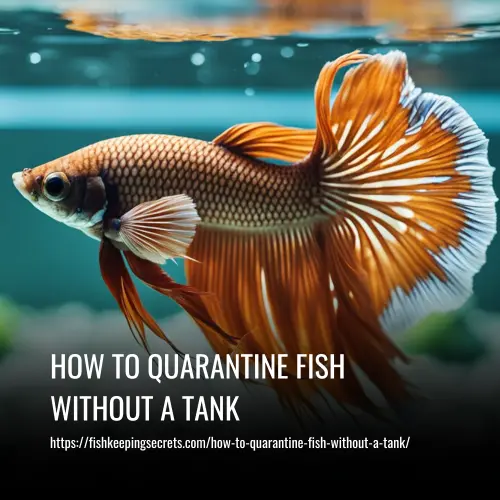
How To Quarantine Fish Without A Tank: A Step by Step Guide
To quarantine fish without a tank, you can use a large plastic container or bucket as a temporary holding tank. Here are the steps to follow:
Materials You Will Need
To get started, gather the following materials:
- A large bucket
- Aquarium salt
- Antibiotic and antifungal
- Anti-parasite
- A water test kit
Now, let’s go through the process step by step.
Step 1: Clean the Bucket and Fill with Water
Ensure that the bucket you are using is clean and free from any contaminants. Rinse it thoroughly to remove any residues or chemicals. Fill the bucket with clean, fresh water.
Step 2: Test the Water Parameters
Monitor the water parameters using a water test kit. Check the pH levels and ammonia nitrate levels. Adjust the parameters according to the test results, ensuring that the water is suitable for your fish.
Step 3: Treat for Parasites
Introduce your fish into the bucket of clean water. Use an anti-parasite medicine, such as ParaGuard, to treat any external parasites that may be present on the fish. Follow the instructions provided with the medication, including any recommended water changes.
Note: There is a risk that weak fish may not survive this procedure. Unfortunately, there is nothing you can do about this. However, it is important to continue with the process to protect the other fish in your main tank.
Step 4: Adding Aquarium Salt
After treating the parasite, you should add aquarium salt to a separate bucket. However, be cautious as this can be harmful to invertebrates and plants, so it should not be added directly to the tank. The amount of salt to add depends on the type of fish you have. For sensitive fish, 0.2% salt is sufficient.
Add 0.1% salt on the first day and another 0.1% on the second day. For hardy fish like goldfish, add 0.5% salt to the water. On each of the following five days, add an additional 0.1% salt. Make sure to change the water and follow these steps each time.
Step 5: Changing Water
It is essential to change the water every few days and repeat the above steps from the beginning. This helps maintain the proper treatment and ensures that your new fish will be free from any diseases that could potentially harm your main fish tank. It is recommended to continue this process for two to four weeks for maximum protection.
Step 6: Move New Fish to the Tank
Once you have successfully completed the quarantine period and taken all necessary precautions, it is time to introduce your new fish to the main tank. By following the proper quarantine procedures, you have minimized the risk of introducing diseases or parasites to your existing fish.
By following these steps, you can ensure the health and well-being of both your new fish and the existing fish in your main tank.
Why Should You Quarantine Your Fish
Quarantining your fish is important to prevent the spread of illnesses and protect the existing inhabitants of your aquarium. New fish, especially those from fish farms and sold in fish stores, are prone to illnesses due to the stress they endure during transportation.
These fish may have weakened immune systems, making them more susceptible to diseases. If a potentially sick fish is added to the main aquarium without quarantine, the illnesses can spread to the other fish and result in a complete wipeout of all livestock.
By quarantining new or sick fish, you can ensure their health and the safety of your existing fish. Additionally, if you have a sick fish in your main aquarium, quarantining it in a separate tank allows for targeted treatment and protects the other fish in the main tank.
Is It Necessary To Quarantine A New Fish
Quarantining a new fish is necessary to protect the health and well-being of your existing fish. There is always a risk of introducing diseases or parasites when adding a new fish to your tank. By quarantining the new fish, you can observe and monitor their health before introducing them to the main tank.
Fish can carry various diseases such as parasites and fish tuberculosis. If a new fish is infected, these diseases can quickly spread to the other fish in your tank, potentially leading to illness and death. Quarantining allows you to prevent the spread of these diseases and protect the overall health of your fish.
While quarantining a new fish may require some effort and patience, it is a necessary step to ensure the long-term well-being of your entire fish tank. By taking this precautionary measure, you can minimize the risk of introducing harmful diseases and maintain a healthy and thriving aquatic environment.
How Long Should Fish Be Quarantined
When it comes to quarantining new fish, it is recommended to quarantine them for a period of two to four weeks. This duration allows enough time to observe the fish for any signs of diseases or infections. During this quarantine period, it is important to follow proper procedures to ensure the health and well-being of your fish.
Taking the time and effort to quarantine your new fish can help prevent the introduction of diseases and protect the existing fish in your tank. Patience and diligence are key in achieving the best results for your valuable fish tank.
FAQs
Yes, it is possible to quarantine a fish without a tank. Instead of using a tank, you can use a large-sized bucket as an alternative. This will serve the purpose of isolating the fish and preventing the spread of any potential diseases without the need for an additional tank.
Yes, you can quarantine fish in a bucket as long as it is a clean and food-safe container. It’s best to use a container with clear sides so you can monitor the fish’s health easily. This will allow you to see if their condition is improving or worsening during the quarantine period.
It is recommended to quarantine shrimp, especially if they are purchased directly from importers, as they can potentially carry diseases. Observing their condition in quarantine can help prevent the spread of any illnesses to your existing colony. On the other hand, snails rarely carry illnesses, so you can usually skip the quarantine step and add them directly to your aquarium.
If it’s your first fish and you’re setting up a new tank, you don’t have to quarantine your fish since there are no existing animals to protect. However, if your main aquarium is very large and the fish are small, it might be beneficial to set up a separate quarantine tank to save on medication costs. Additionally, if your main aquarium has live plants or snails, it’s best to move your fish to another container for treatment with aquarium salt, as these organisms do not tolerate high concentrations of salt well.
If you can’t buy the quarantine med trio for treating fish, you can use aquarium salt as a cheaper and effective alternative. Aquarium salt is good for treating bacteria, fungus, and external parasites, but it may not be safe for aquatic plants, snails, and certain fish like anchor catfish.
Conclusion
In conclusion, quarantining fish without a tank is a necessary step to ensure the health and safety of your new fish and existing aquarium inhabitants. By using a separate container or bucket, monitoring water quality, and observing the behavior and appearance of the fish, you can prevent the spread of diseases and parasites.
It’s important to quarantine new fish for at least 2-4 weeks before introducing them to your main tank to minimize the risk of introducing infections. Additionally, performing a thorough disinfection of the quarantine container after each use will help reduce the chances of cross-contamination.
Remember, prevention is key when it comes to maintaining a healthy and thriving aquarium. By implementing proper quarantine protocols, you can protect your investment in fish and ensure a peaceful and disease-free aquatic environment for all inhabitants.

